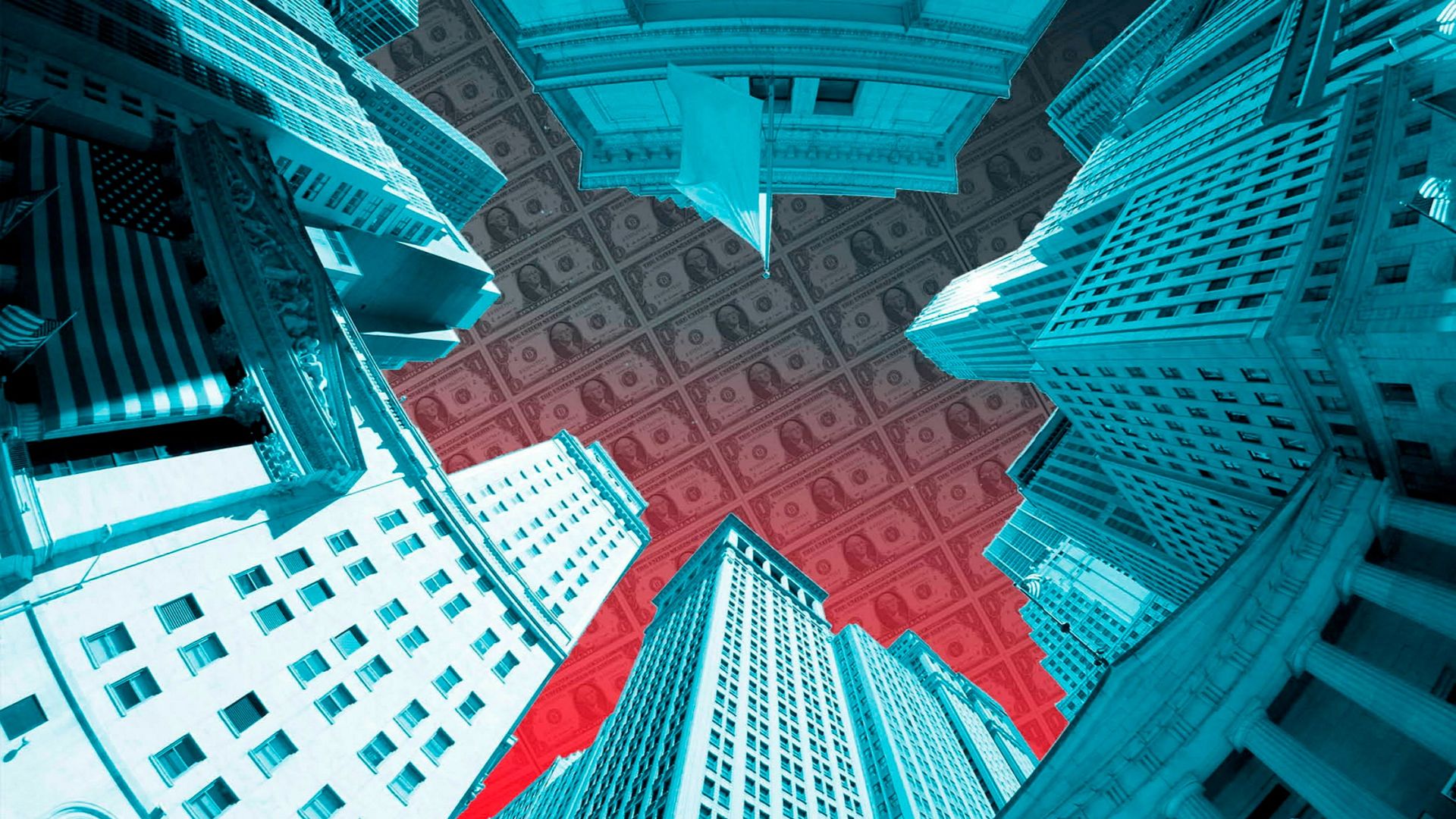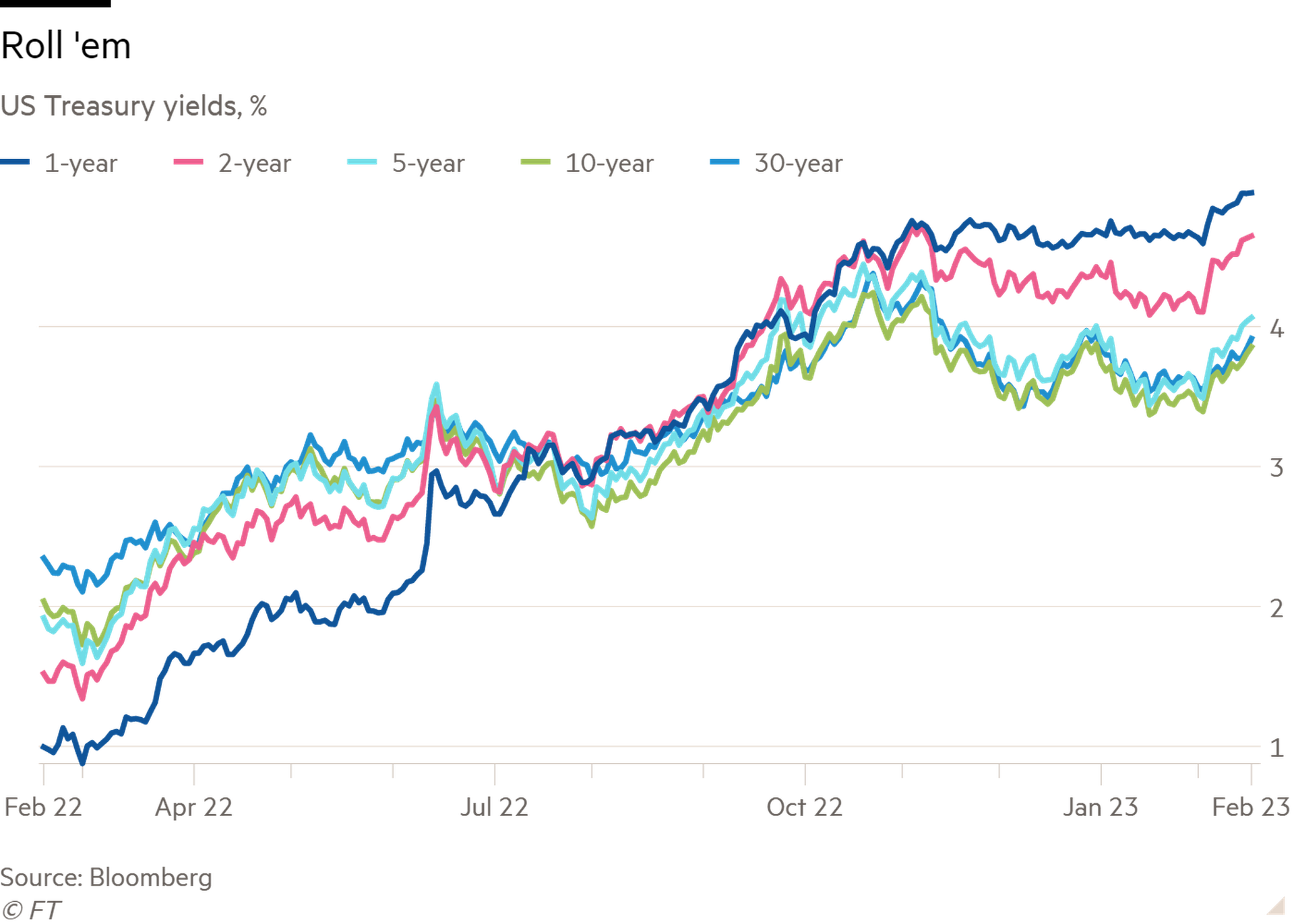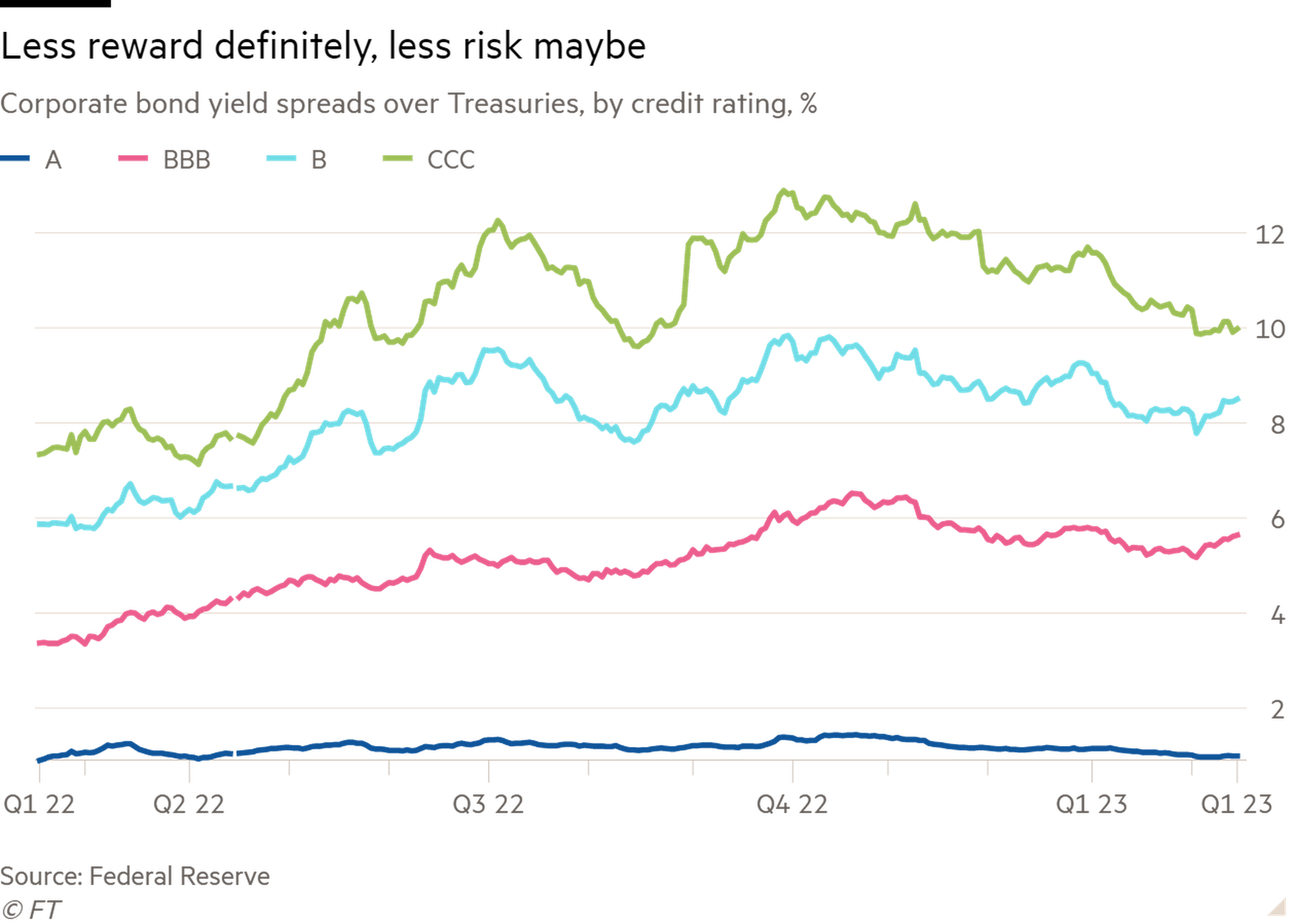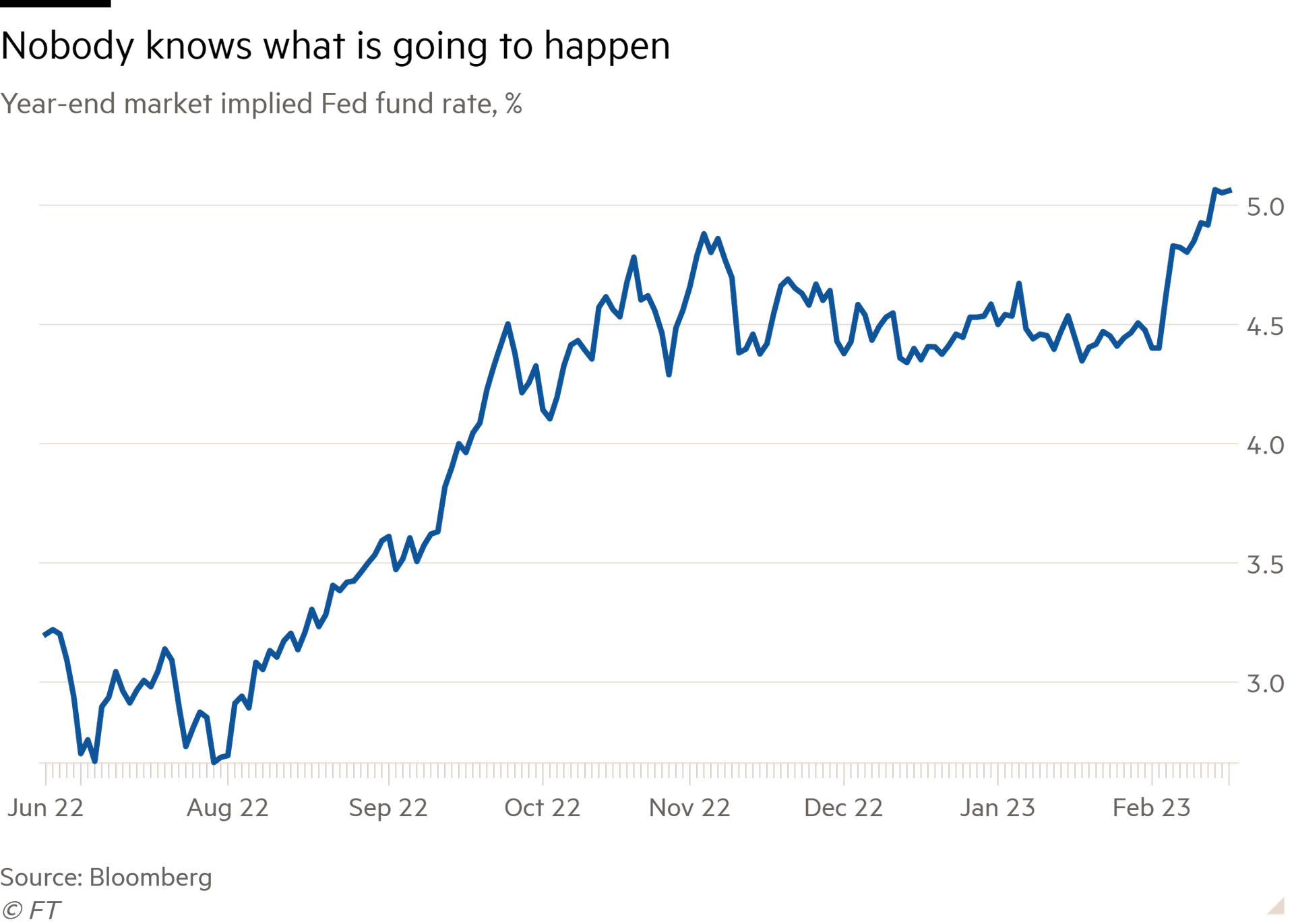Good morning. The man behind Luna
Credit: risk-free, low-duration investing never looked so good
Here』s a chart:
You now receive 104 basis points more annual yield from one-year Treasury (dark blue line) than you do from a 30-year Treasury. A year ago, you received 135bp more for the 30-year (mid-blue). That』s a big swing.
From one point of view, this makes sense, in the way any inverted yield curve makes sense. The Federal Reserve has raised short rates artificially high to slow the economy. Long bonds are telling you that no one expects this to last for ever.
On the other hand, this is weird. Investors, in effect, have to pay to take duration risk. Why would you do anything other than own short bonds, and just keep rolling them over? You can always add duration risk later, when the Fed hiking cycle is over. Yes, you might think that 4 ish per cent on long Treasuries is going to look mighty good when we fall into a recession, or you might just think 4 per cent is the cyclical top regardless. But those are bets. The 5 per cent one-year Treasury is basically just money in your pocket.
And on the topic of not taking risk, let』s look at yield spreads on corporate bonds:
Since the end of September, the amount investors get paid for taking credit risk has fallen dramatically. A-rated bonds (lowest rung of investment grade), now give you about a percentage point of extra yield over Treasuries, 40bp less than five months ago. On B-rated bonds (mid-junk), the reward for credit risk has fallen by 1.3 percentage points.
When a large chunk of your yield is coming from the risk-free Treasury rate, why pile on credit risk? As Jim Sarni of Payden & Rygel put it to me (speaking of the short end of the curve), it』s not smart to go down in credit quality when the risk-free rate is 80 per cent of the total return.
And these lower-risk premiums come when it is debatable whether the biggest identifiable risk — a Fed-induced recession — has receded. Yes, economic data has come in strong, but the market is waking up, abruptly, to the fact that this means higher rates for a longer time, meaning the possibility of a later but deeper recession. Here is the market implied year-end 2023 fed funds rate:
The expected year-end policy rate has moved by 66bp in two weeks. That』s bonkers, and shows how this economy continues to throw surprises at us. I look at that move and say (again), 「you go ahead and take credit and duration risk in your fixed income, I』ll be rolling my-one year paper at 5 per cent」.
Take this with a grain of salt. I am, constitutionally, a coward, and my investing life has been a series of failures to take enough risk. Fixed-income pros take a more nuanced view.
Tomas Hirst of Liberty Mutual broadly agrees with my point about credit risk. 「We think credit is rich across the board, especially in the US,」 he says. 「One of the things the market is adjusting to is 8 per cent yields in double-B or single-B [ratings] land. That would have been very juicy just a little while ago, but people have not adjusted to the high risk-free rate — your default premium is actually very skinny. If spreads rise on you, you will have taken risk and then underperformed Treasuries. 」He notes that while very few companies will need to refinance this year, that risk will rise in 2024 and 2025. 「If what we are seeing is recession delayed, spreads look very ungenerous. 」But he is far from sure that this is what we are headed for.
Monica Erickson of DoubleLine is still more sanguine. She points out that while spreads are narrow by recent standards, they remain near 10-year averages; companies are still increasing revenues, and have been conservative with their balance sheets; and many bonds are still trading below par. It looks like a decent set-up to her.
Death to Capm
In 1934, Arthur Dewing, a co-founder of the Harvard Business School, proposed an sensible way to value corporations. He suggested dividing firms into general risk categories, from low to very high. Less risky companies would get lower discount rates, and thus higher valuations for the same amount of expected future earnings. Riskier companies would get the opposite treatment.
But over time Dewing』s approach fell out of favour, eclipsed by a hot newcomer called the capital asset pricing model. Capm matters for two reasons. One is that everyone needs a discount rate to value their future cash flows, and almost everyone, including 85 per cent of big corporate finance departments, uses Capm to do it. The other is that Capm is a terrible model of reality.
Unhedged has had Capm drilled into our heads (Rob during his CFA prep; Ethan in Gregory Besharov』s finance course) and we assume many readers have too. But in case not, a quick refresher:
Discount rate = Risk-free rate + (Beta * Equity risk premium)
In other words, the return you should make on an given asset is the risk-free rate, plus the return for taking market risk, multiplied by the asset』s relative volatility. Core insight: all you get paid extra for is buying volatility.
Capm wilts when predicting actual market outcomes. One reason is that beta, a stock』s sensitivity to market returns, is really a measure of volatility, not risk, as Warren Buffett often reminds us. Under Capm, a high-beta stock gets a heavier discount, even when (for example) beta is high because a stock has sold off, and now sits in value territory. Beta times equity market risk just doesn』t tell you everything you need to know.
Capm』s flaws are well known; the harder question is always what might work better. To that end, a recent paper by Nicolas Hommel of Princeton, Augustin Landier of HEC Paris and David Thesmar of MIT (hereafter HLT) caught our attention.
HLT start by looking at public stock prices and analyst cash flow estimates. They call the rate that matches the expected cash flows with market prices 「imputed implied cost of capital」. Each industry has its own IICC, and industry IICC can be subdivided into big and small companies, value and growth companies, and so forth. The thesis is that IICCs, not Capm outputs, are the right discount rates to use in each category of company.
To test the thesis, they slice the universe of companies into two samples, one for training and another for validation. First, HLT find discount rates by industry in the training sample. Then they ask: how well do these industry-level discount rates predict actual stock prices in the validation sample? Much better than Capm, it turns out.
What』s striking is how simple the underlying idea is. How should we discount our cash flows? Well, how about having a look at our peers』 discount rates. Many practitioners will already do something like this. Like Dewing a century ago, HLT propose drawing discount rates from general risk categories, in this case from industry averages.
The appeal of the HLT method is that it taps the collective knowledge of the market: what the market knows about the relative riskiness of different industries, for example. Capm would have you believe that such idiosyncratic risks can be ignored because they can be diversified away. But in the real world, perfect diversification is devilishly hard to achieve — and guarantees average returns. Wu & Armstrong
One good read
Great news for us stupid people: extreme wealth and extreme intelligence are not highly correlated.




